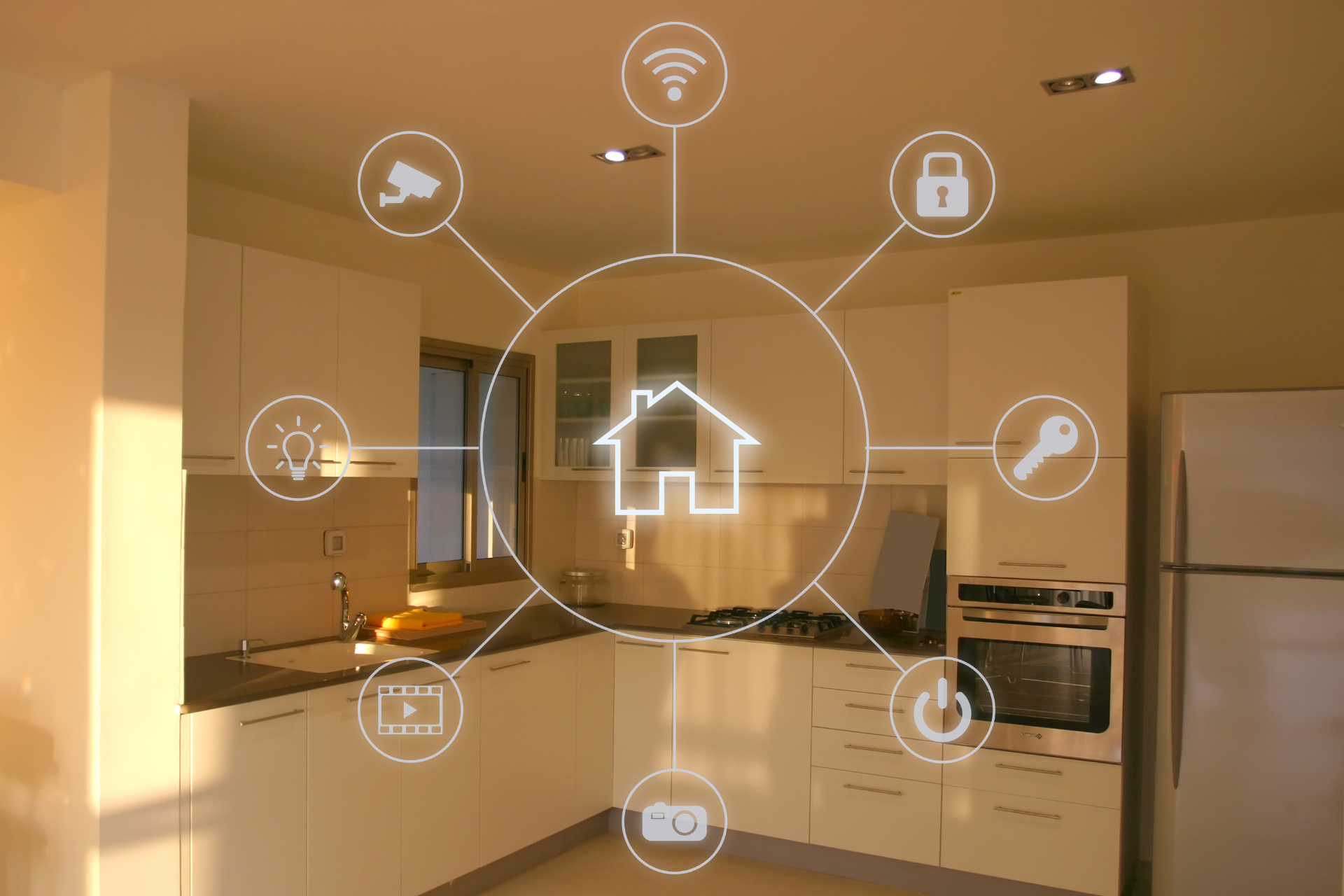Home automation is a term that appeared in the seventies, referring to all automated management techniques applied to housing that are used to improve comfort, security and energy efficiency. It has become much more than simply centralising household equipment as it is nowadays a revolution that is transforming our homes into connected and intuitive environments. Let’s discover how home automation is reinventing our houses, placing comfort, security, and energy efficiency at the heart of every action.
The three main fields of application
The first one is comfort. Actually, with home automation, laziness becomes an art of living: no longer need to get up from the sofa to adjust the air conditioning, close the windows or turn off the lights : your phone or voice assistant does it for you! Moreover, home automation also allows you to personalise your space according to your preferences, as you can set up customised routines tailored to your lifestyle and everyday needs. With just a few taps or voice commands, your home transforms into a sanctuary perfectly tuned to your comfort and convenience.
The second field is security. Thanks to video surveillance cameras, alarm systems or motion detectors, you can monitor what is going on in your house remotely and in real-time, all from the convenience of your phone or laptop. Motion sensors as well as door and window opening detectors can also trigger alerts in the event of intrusion or suspicious activity, enabling you to react quickly and contact the authorities if necessary. Moreover, as you do not want a gas leak or water damage to happen, the various connected objects are able to alert you to maintenance and servicing requirements.
Finally, home automation ensures energy efficiency. Imagine a home where every appliance automatically adapts to your needs, where heating and air conditioning anticipate your preferences, turn off when you are not there, and where lighting adjusts to natural light and your presence. Home automation makes this vision a reality as it helps reduce your carbon footprint by optimising your energy consumption. In addition, home automation also creates alerts in case of abnormal energy consumption. This helps homeowners quickly fix any issues and use energy more efficiently.
Actual trends
Surveillance systems are in high demand, offering peace of mind by detecting intruders and keeping a watchful eye on beloved pets at home. Connected locks are in vogue as well, allowing you to lock or unlock your front door remotely and without keys.
More and more connected objects also find their way into the kitchen: connected fridges suggesting recipe ideas and helping to manage grocery lists; smart ovens that automatically program temperature and cooking settings; and next-generation induction hobs that adapt to the size of your pans.
Even household chores are getting a high-tech upgrade thanks to intelligent robot vacuum cleaners that can be programmed remotely to keep your home clean and tidy. The garden is not to be left out of the tech revolution as objects such as robotic lawnmowers, automatic sprinklers, and connected flowerpots, are transforming outdoor maintenance into a hassle-free experience.
Health-conscious consumers are also turning to a variety of connected devices, including sleep monitors, smart scales, and air quality analysers, to monitor their well-being. With these innovations, you can enjoy a smoother integration of technology into your daily lives, enhancing convenience, comfort, and efficiency in meaningful ways.
Points to take into account
As practical and convenient as home automation can be, you have to take into account some criteria when equipping your house with this kind of system. First, having a reliable internet connection is essential to ensure that your smart home devices can function smoothly and provide you with the seamless experience you deserve. Then, you have to consider the price, depending on the equipment you desire and the budget that you are willing to spend on it. For a basic installation including devices such as smart thermostats, connected light bulbs and security sensors, count between 500 and 2,000 euros. For a mid-range installation with more advanced features such as surveillance cameras, sophisticated alarm systems and integrated voice assistants, the cost can vary between 2,000 and 5,000 euros. For the brave ones who want to be at the edge of technology, you will have to spend between 5,000 and 20,000 euros in order to have a high-end installation including advanced features such as complete audio and video control systems, advanced energy management systems and full device integration. Moreover, keep some money aside as home automation requires regular maintenance to ensure proper operation.
Overall, the benefits of home automation contribute significantly to the value of a property, elevating its appeal and desirability in the competitive real estate market. By enhancing comfort, security, and energy efficiency, these automatic systems not only meet current demands but also anticipate future trends. As homes with automation systems are increasingly in demand, properties equipped with smart technologies are likely to command higher prices and attract more buyers. Therefore, investing in home automation is not just a modern convenience, but a strategic move that can greatly enhance the marketability and value of a property in the long run.




